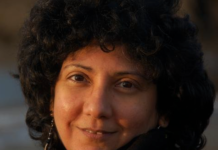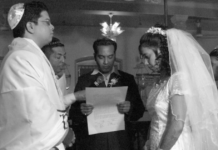
Jael Silliman is an Associate Professor of Women’s Studies at the University of Iowa and the author of Jewish Portraits, Indian Frames: Women’s Narratives from a Hopeful Diaspora (Brandeis University Press, 2002). The experiences of four generations of Jewish women in Silliman’s family are chronicled in this deeply personal novel about Calcutta’s little-known Jewish community. Gayatri Spivak described it as “a remarkable description of the link between urban and national identities, the multiplicity of the Jewish diaspora, the cultural difference between colony and post-colony, and, most all, women’s lives.” Professor Silliman, who lives in Iowa City, spoke with Asia Society.
There are three separate Jewish communities in India, according to my understanding. Is it possible for you to give a brief overview of each community’s history? When and under what conditions did each community arrive in India? In South Asia, how did the various communities interact?
Cochin’s Jewish community is the country’s oldest. They are thought to have arrived as traders or as refugees during Jerusalem’s siege 2,000 years or more ago. Under the Hindu Maharaja, they were a rich group of agriculturalists, soldiers, and merchants, with a few holding important governmental positions. The Bene Israel community said to have been shipwrecked off the Konkan coast and lived in and around Mumbai long before the city was founded, is the city’s second-oldest Jewish community. They adapted into Hindu culture, yet kept some Jewish traditions, allowing them to be “found” and reintegrated into the Jewish mainstream long later.
Source: https://www.asiasociety.org/jael-silliman-bringing-indias-jews-light




